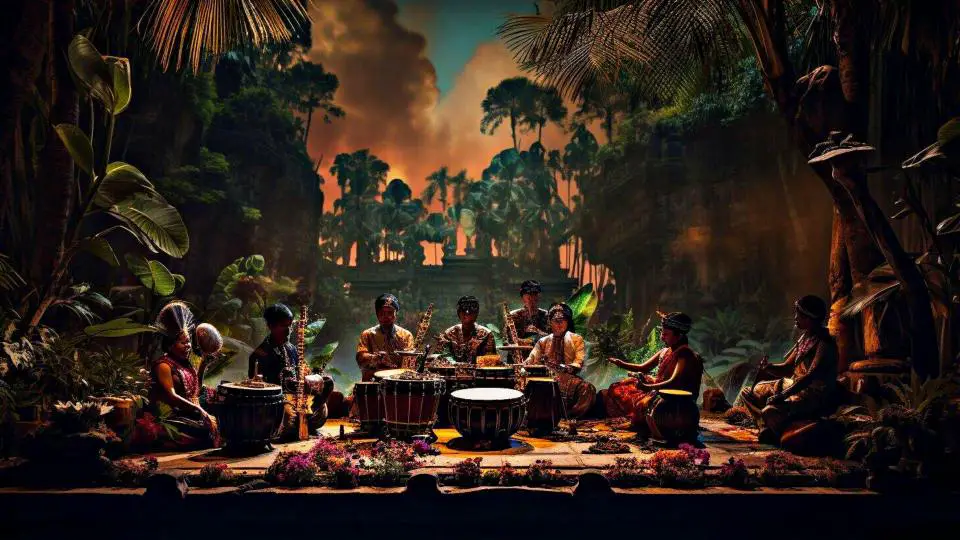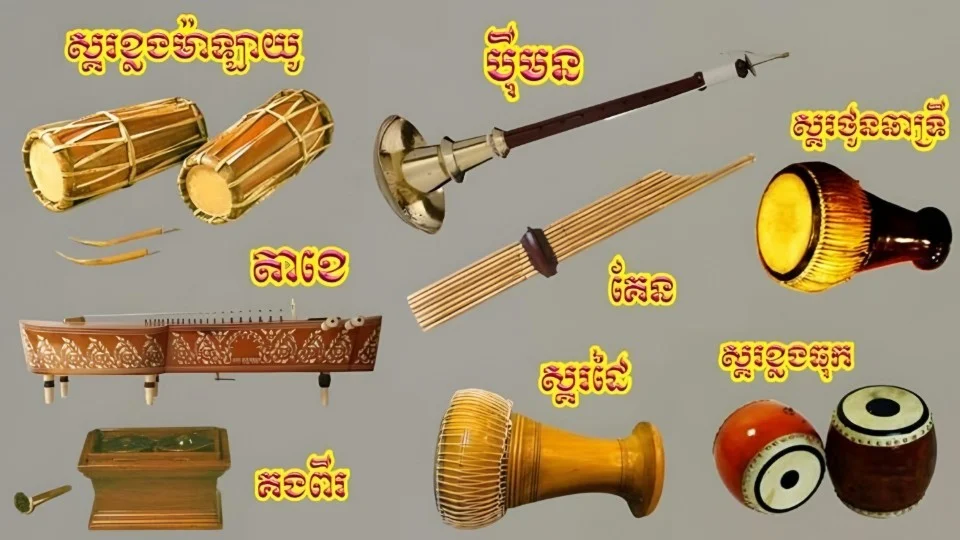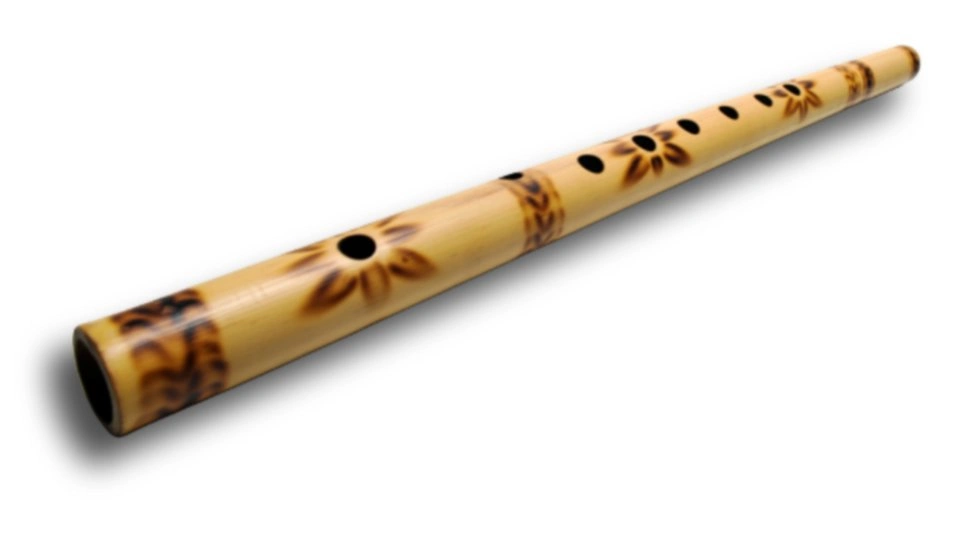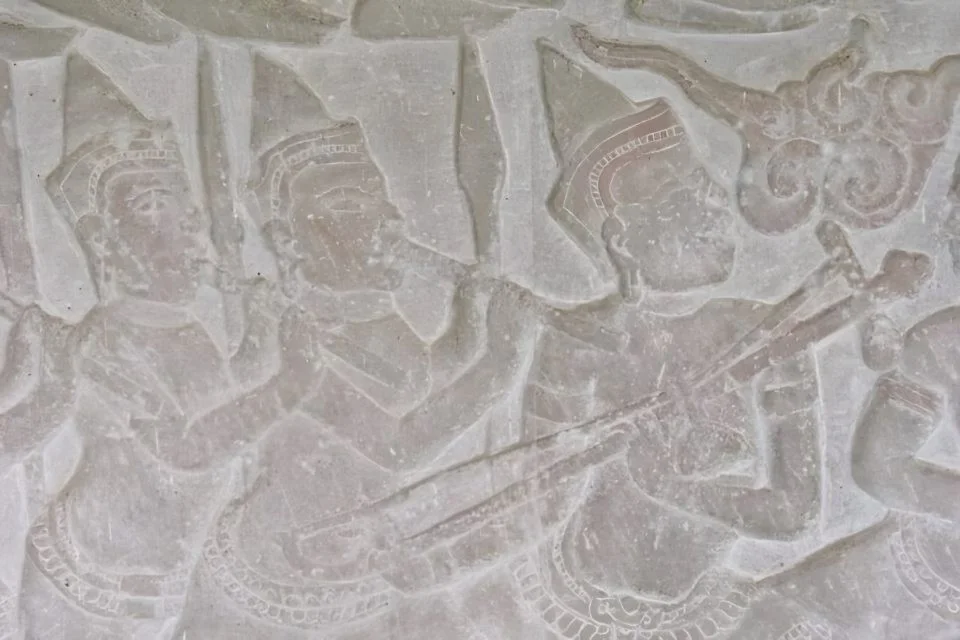Khmer music, a vibrant tapestry of sounds, weaves a captivating narrative of Cambodia’s rich cultural heritage. At its heart lies a diverse array of Khmer traditional music instruments, each with its own unique voice and history.

This article will delve into the world of these instruments, exploring their characteristics, significance, and the role they play in Cambodian culture.
What are the Instruments of Cambodia?
The landscape of Cambodian music is a vibrant blend of string, percussion, and wind instruments.
- Pinpeat, the grand orchestra of Khmer music, is a cornerstone. This ensemble features instruments like the Khloy (bamboo flute), Roneat Ek (high-pitched xylophone), Sralai (oboe), Kong Thom (large drum), Kong Toch (small drum), Samphor (cymbals), Tro Kheng (two-stringed fiddle), and Skor (gong).
- Pinphat, another significant ensemble, utilizes instruments such as the Chapey Dang Veng (high-pitched hammered dulcimer), Chapey Tuong (low-pitched hammered dulcimer), Skor, Kong Thom, and Kong Toch.
Beyond these ensembles, individual instruments hold immense cultural value. The Chapey, a family of hammered dulcimers, comes in various forms like Chapey Dang Veng, Chapey Tuong, and Chapey Krom, each contributing distinct timbres to the musical landscape.

The Khim, a zither, adds delicate melodies, while the Tro, a two-stringed fiddle, offers a soulful and expressive voice. The Sralai, an oboe-like instrument, plays a crucial role in ceremonial music, adding a poignant and penetrating sound.
Khmer Instrument Sample
To truly appreciate the beauty of these instruments, it’s essential to experience their sounds. Numerous online platforms offer a wealth of resources for listening to Khmer instrumental music. YouTube channels dedicated to Cambodian music provide a fantastic opportunity to delve deeper into this rich musical tradition.
Instrument Meaning in Khmer
While the precise etymological origins of many instrument names may be lost to time, some offer intriguing clues.

For instance, “Khloy,” meaning “pipe” or “flute,” reflects the instrument’s construction.
National Instrument of Cambodia
While Cambodia does not have an officially designated national instrument, the diverse array of instruments, each with its unique role and cultural significance, collectively represents the nation’s musical heritage.
Cambodian Musical Instruments
The world of Cambodian musical instruments is a testament to the ingenuity and artistry of the Khmer people. From the intricate carvings on traditional instruments to the delicate interplay of sounds in a Pinpeat ensemble, each instrument tells a story of cultural identity and artistic expression.
Khmer Empire Instruments that Improve Expedite Trade
While specific evidence may be limited, it’s plausible that during the Khmer Empire, musical instruments played a role in facilitating trade and cultural exchange within the region.

Music and instruments have long served as powerful tools for communication and cultural diplomacy.
Conclusion
The traditional Khmer instruments are more than just musical tools; they are repositories of history, culture, and emotion. By exploring these instruments, we gain a deeper understanding of Cambodian society and the enduring power of music to connect people across generations.
